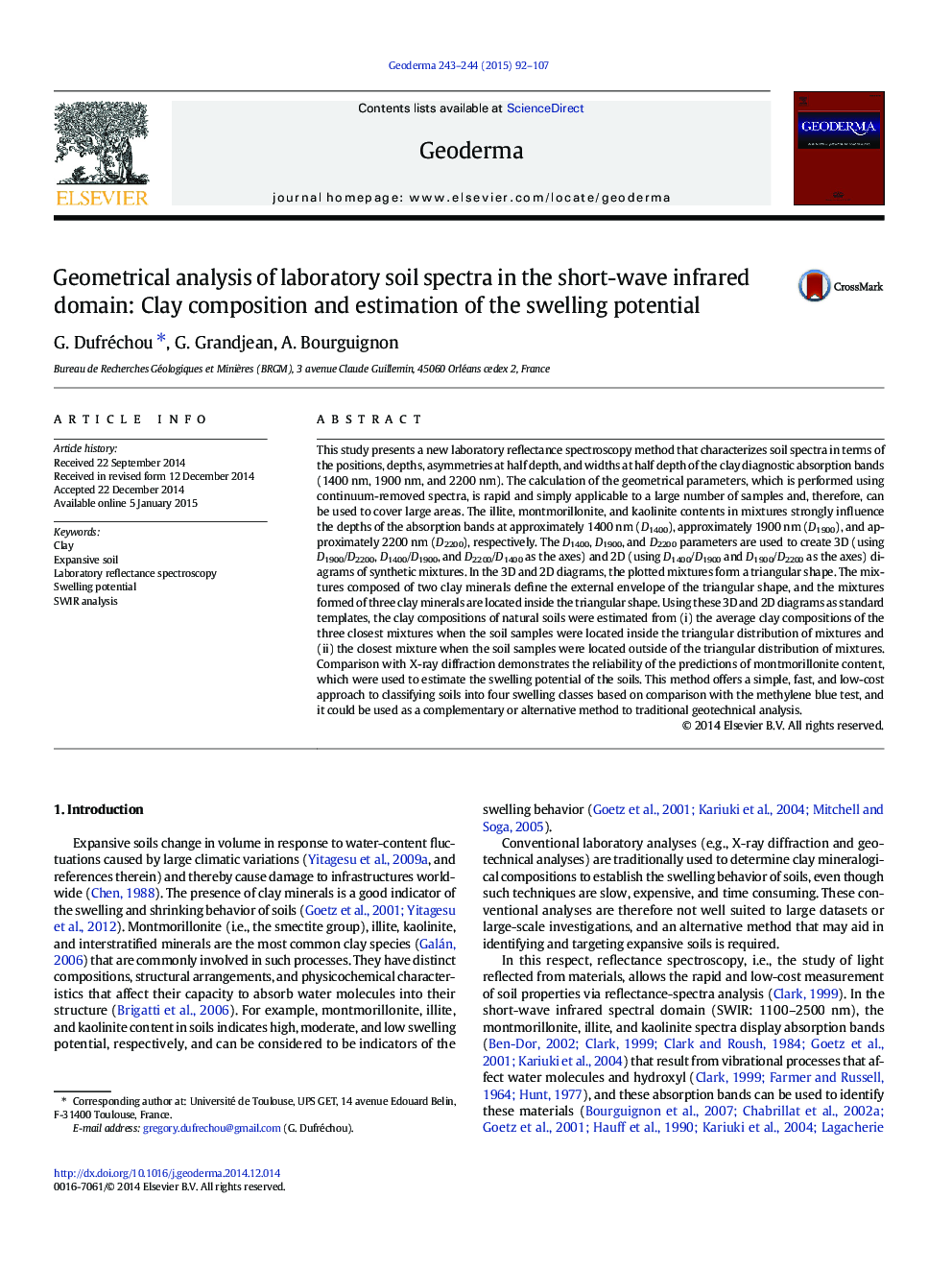| Article ID | Journal | Published Year | Pages | File Type |
|---|---|---|---|---|
| 4573208 | Geoderma | 2015 | 16 Pages |
•A new laboratory reflectance spectroscopy method that analyzes geometry of soil spectra•Clay composition is estimated from synthetic kaolinite/illite/montmorillonite mixtures.•Provide 2D and 3D templates to estimate clay composition of soils•This method offers a fast and low-cost approach to classify soils into four swelling classes.
This study presents a new laboratory reflectance spectroscopy method that characterizes soil spectra in terms of the positions, depths, asymmetries at half depth, and widths at half depth of the clay diagnostic absorption bands (1400 nm, 1900 nm, and 2200 nm). The calculation of the geometrical parameters, which is performed using continuum-removed spectra, is rapid and simply applicable to a large number of samples and, therefore, can be used to cover large areas. The illite, montmorillonite, and kaolinite contents in mixtures strongly influence the depths of the absorption bands at approximately 1400 nm (D1400), approximately 1900 nm (D1900), and approximately 2200 nm (D2200), respectively. The D1400, D1900, and D2200 parameters are used to create 3D (using D1900/D2200, D1400/D1900, and D2200/D1400 as the axes) and 2D (using D1400/D1900 and D1900/D2200 as the axes) diagrams of synthetic mixtures. In the 3D and 2D diagrams, the plotted mixtures form a triangular shape. The mixtures composed of two clay minerals define the external envelope of the triangular shape, and the mixtures formed of three clay minerals are located inside the triangular shape. Using these 3D and 2D diagrams as standard templates, the clay compositions of natural soils were estimated from (i) the average clay compositions of the three closest mixtures when the soil samples were located inside the triangular distribution of mixtures and (ii) the closest mixture when the soil samples were located outside of the triangular distribution of mixtures. Comparison with X-ray diffraction demonstrates the reliability of the predictions of montmorillonite content, which were used to estimate the swelling potential of the soils. This method offers a simple, fast, and low-cost approach to classifying soils into four swelling classes based on comparison with the methylene blue test, and it could be used as a complementary or alternative method to traditional geotechnical analysis.
